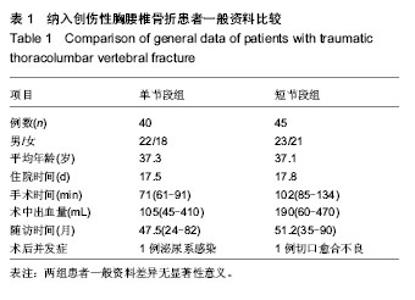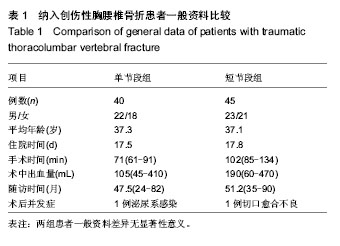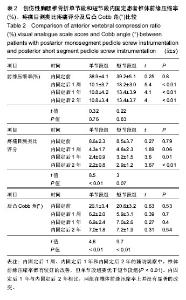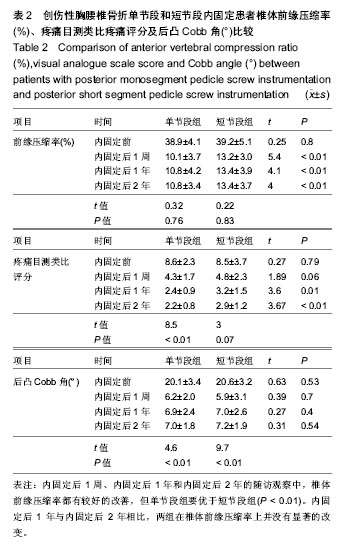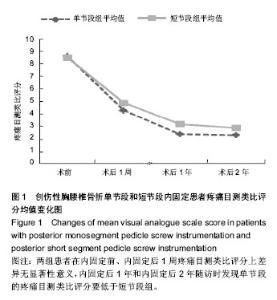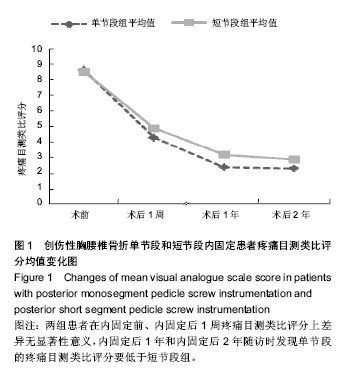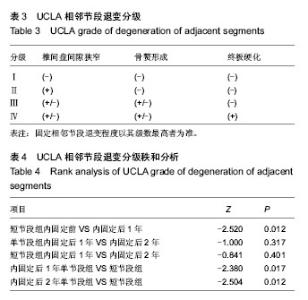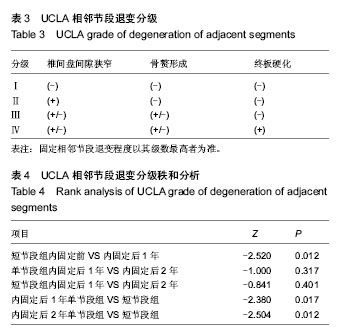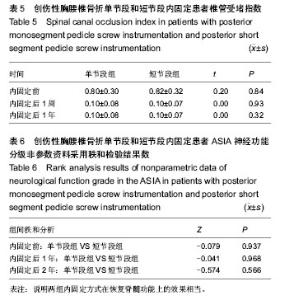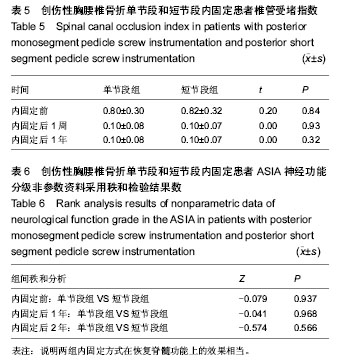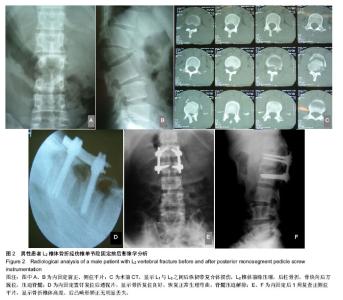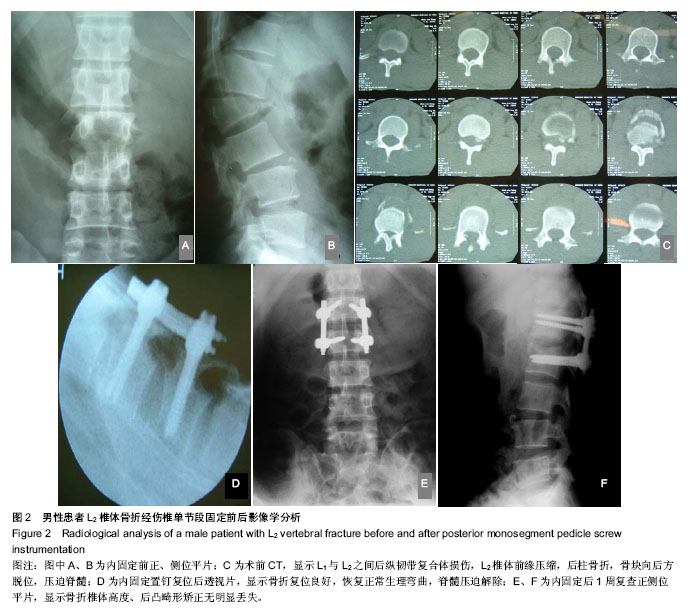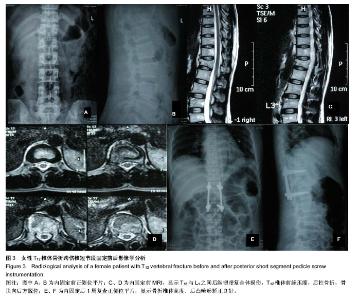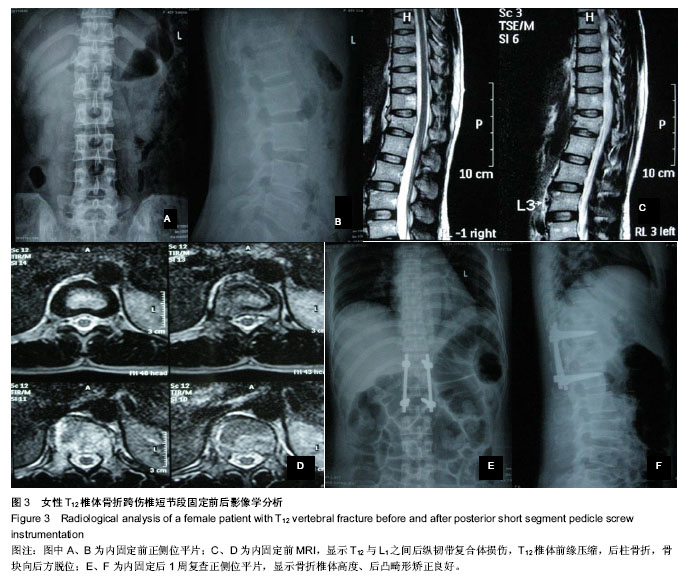| [1] Magerl F, Aebi M, Gertzbein SD, et al. A comprehensive classification of thoracic and lumbar injuries. Eur Spine J. 1994;3(4):184-201.
[2] 宋元进,孙海燕,王谦军,等.后路短节段固定结合伤椎固定经椎弓根植骨治疗胸腰段骨折[J].中国矫形外科杂志,2010,16(2):110-112.
[3] Aebi M. Classification of thoracolumbar fractures and dislocations. Eur Spine J. 2010;19 Suppl 1:S2-7.
[4] 魏富鑫,刘少喻,梁春祥,等.经骨折椎单节段复位固定治疗创伤性胸腰椎骨折的临床疗效[J].中国骨科临床与基础研究杂志,2009, 1(2):88-92.
[5] Mahar A, Kim C, Wedemeyer M, et al. Short-segment fixation of lumbar burst fractures using pedicle fixation at the level of the fracture. Spine (Phila Pa 1976). 2007;32(14):1503-1507.
[6] 张锋,张文志,李旭,等.后路长节段与短节段椎弓根螺钉治疗胸腰段爆裂性骨折的疗效比较[J].临床骨科杂志, 2013,16(2):132- 135.
[7] Lee GW, Jang SJ, Kim JD, et al. The efficacy of percutaneous long-segmental posterior fixation of unstable thoracolumbar fracture with partial neurologic deficit. Asian Spine J. 2013; 7(2):81-90.
[8] 阮狄克. 胸腰段脊柱骨折内固定使用长节段还是短节段[J].中国骨伤,2009,28(7):483-484.
[9] 魏富鑫,刘少喻,赵卫东,等.单节段与双节段椎弓根螺钉固定胸腰椎单椎体骨折的生物力学比较[J].中国脊柱脊髓杂志,2007, 17(1): 46-50.
[10] Korovessis P, Repantis T, Zacharatos S, et al. Does Wallis implant reduce adjacent segment degeneration above lumbosacral instrumented fusion? Eur Spine J. 2009; 18(6): 830-840.
[11] Kim HS, Kim SW, Ju CI, et al. Short segment fixation for thoracolumbar burst fracture accompanying osteopenia : a comparative study. J Korean Neurosurg Soc. 2013;53(1):26- 30.
[12] Li X, Ma Y, Dong J, et al. Retrospective analysis of treatment of thoracolumbar burst fracture using mono-segment pedicle instrumentation compared with short-segment pedicle instrumentation. Eur Spine J.2012;21(10):2034-2042.
[13] Kim HS, Kim SW, Ju CI, et al. Short segment fixation for thoracolumbar burst fracture accompanying osteopenia : a comparative study. J Korean Neurosurg Soc. 2013;53(1): 26-30.
[14] de Assuncao FC, Veloso RP, Meves R, et al. Thoracolumbar burst fracture: radiographic evaluation on differences between Magerl's A and B. Acta Ortop Bras. 2012;20(4):240-242.
[15] Shi R, Liu H, Zhao X, et al. Anterior single segmental decompression and fixation for Denis B type thoracolumbar burst fracture with neurological deficiency: thirty-four cases with average twenty-six month follow-up. Spine (Phila Pa 1976). 2011;36(9):E598-E605.
[16] Pizones J, Izquierdo E, Alvarez P, et al. Impact of magnetic resonance imaging on decision making for thoracolumbar traumatic fracture diagnosis and treatment. Eur Spine J. 2011;20 Suppl 3:390-396.
[17] Vaccaro AR, Oner C, Kepler CK, et al. AOSpine thoracolumbar spine injury classification system: fracture description, neurological status, and key modifiers. Spine (Phila Pa 1976). 2013;38(23):2028-2037.
[18] 魏富鑫,刘少喻,梁春祥,等.单椎间椎弓根钉固定胸腰椎骨折生物力学评价[J].生物医学工程与临床,2008,12(2):85-89.
[19] 梁涛,刘浩,丰干钧,等.胸腰椎爆裂骨折前路单节段与双节段固定的生物力学比较[J].生物医学工程学杂志,2011,28(3):491-496.
[20] 许效坤,左炳光. 后路短节段固定治疗胸腰椎骨折是否需要融合?[J].中国骨与关节损伤杂志,2012,27(9):820-821. |
